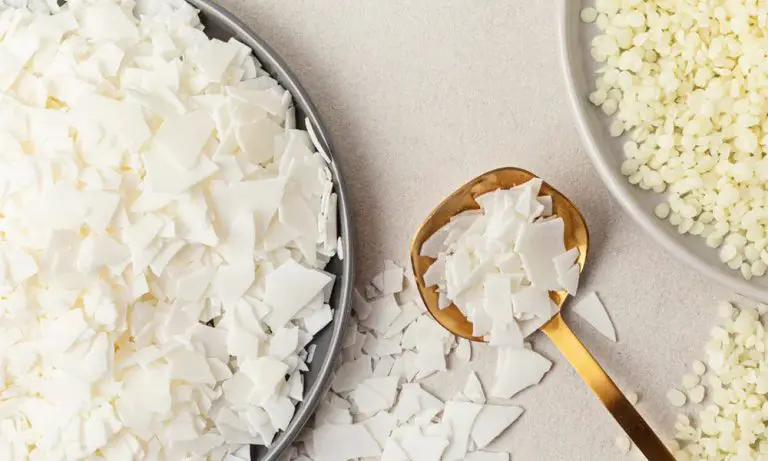How Was Wax Created?
Early History of Wax
The use of wax dates back to the earliest civilizations. Evidence suggests that as early as 3000 BC, ancient Egyptians were using beeswax to construct ships and preserve mummies The History of Wax Seals. Wax seals made of stone or metal were used in ancient Mesopotamia and other early civilizations to secure letters, goods, and official documentation The History of Wax Seals.
Beeswax was one of the earliest waxes used by humans. Bees secrete beeswax to build the honeycombs in their hives. This wax has been harvested by people for thousands of years. Early civilizations valued beeswax for its waterproof and malleable qualities. It was used to create candles, cosmetics, wood finishes, and for sealing letters or official decrees.
Other naturally occurring waxes such as paraffin, carnauba, and candelilla waxes were also used in early civilizations. These waxes were derived from petroleum, palm plants, and shrubs respectively. They served purposes from candle-making to producing protective coatings.
The unique properties of wax – as a sealant, adhesive, protective coating, and fuel for lighting – made it an indispensable substance for early civilizations. Wax enabled the preservation of goods, documents, and human remains. It also facilitated trade, communication, and record-keeping through its sealing applications. The versatility and longevity of wax has allowed it to remain an important material throughout human history.
Beeswax
Bees produce wax to build honeycomb inside their hives. Worker bees have special wax-producing glands on their abdomens. The bees consume honey for energy to produce the wax. The wax starts as a liquid and is secreted through small wax mirrors on the bee’s abdomen. The bee moves the wax to its legs and mouth where the wax cools and solidifies into scales. The bees use these wax scales to build the familiar hexagonal cells of the honeycomb.
Beeswax has been used by humans since ancient times. Evidence of beeswax use dates back to around 7000 BC, where it was likely used for lighting and sealing. Ancient Egyptians utilized beeswax in shipbuilding, mummification, and for lost-wax castings of metals. Beeswax candles were common in ancient Rome and Greece as well. The Catholic Church helped spread the popularity of beeswax candles in Europe during the Middle Ages. Beeswax remained an important industry and product until cheaper alternatives like paraffin wax were developed in the 1850s.
Today, beeswax is still used in candle-making, cosmetics, polishes, and for art casting. It is appreciated for being natural, non-toxic, and biodegradable.
Paraffin Wax Development and Commercial Applications
Paraffin wax was first created in 1830 by German chemist Karl von Reichenbach when he attempted to develop a method to efficiently separate and refine waxy substances from wood tar, peat, and lignite coal [1]. Reichenbach found that distilling these materials produced a waxy white substance that resembled natural beeswax. This was the discovery of paraffin wax.
Paraffin wax is acquired from petroleum through a process called dewaxing light lubricating oil stocks [2]. The composition of paraffin wax is a mixture of hydrocarbon molecules containing between 20 and 40 carbon atoms. This gives paraffin wax a melting point between 47°C and 64°C [3].
Paraffin wax was first produced commercially in 1867, less than 10 years after the first oil well was drilled. It quickly found use in candle-making as a replacement for expensive beeswax. Paraffin wax is also used to coat paper and cardboard packaging to make it moisture resistant. Other applications include rubber compounding, wax coatings, polishes, and electrical insulation.
Carnauba Wax
Carnauba wax comes from the leaves of the Carnauba palm tree (Copernicia prunifera), which is native to northeastern Brazil.1 The Carnauba palms grow up to 20 meters tall and produce large fan-shaped leaves. To harvest the wax, the leaves are dried, beaten to loosen the wax, and then the wax is refined and bleached.2
Carnauba wax is considered one of the hardest natural waxes with a very high melting point of 82–86 °C. It consists mainly of aliphatic esters (40–85%), aliphatic alcohols (10–16%), acids (3–6%) and hydrocarbons (1–3%).1 Due to its properties, carnauba wax is used in many products including automobile waxes, cosmetics, dental floss, food products, and polishing compounds for shoes, furniture and floors. It provides a glossy finish and waterproofing. Carnauba wax is also useful for thickening oil-based liquids.
Synthetic Waxes
Synthetic waxes were developed in the early 20th century as alternatives to natural waxes like beeswax. Chemists found ways to synthesize hydrocarbon molecules similar to those found in natural waxes through chemical processes like the Fischer-Tropsch process. This allowed the creation of waxes with specialized properties not found in nature.
Some common types of synthetic waxes include:
- Polyethylene – Made from ethylene gas and polymers. Known for its moisture resistance.
- Polypropylene – Made from propylene gas. Has high melting point.
- PTFE – PolyTetraFluoroEthylene, known by the brand name Teflon. Heat and chemical resistant.
- Montan wax – Made from lignite and coal. Used in polishes.

Synthetic waxes have a wide variety of uses including:
- Candles – Provide consistency and rigidity compared to natural waxes.
- Cosmetics – Impart consistency and moisture resistance.
- Polishes – Montan wax provides glossy finish.
- Packaging – Polyethylene wax coats cardboard boxes and cartons.
- Crayons – Provide smooth laydown and brilliant color.
Synthetic waxes allow for customization and enhancement of properties beyond what natural waxes can offer (Learn more: https://blendedwaxes.com/blog/3-synthetic-wax-types/). Today they make up a major part of the global wax industry.
Wax Innovations
Over time, there have been significant innovations in wax products leading to new applications. According to the Asphalt & Wax Innovations Green Asphalt Technologies website, research and development emphasizes using renewable and recycled materials for eco-friendly industry solutions (https://awi-gat.com/). For example, they have developed an asphalt-rubber wax emulsion that uses plant-based waxes as a sustainable alternative to petroleum-based waxes.
Halleys Stevensons highlights an exciting new wax offering good weather performance using all-natural plant-based waxes instead of traditional paraffin (https://halleystevensons.co.uk/the-next-generation-of-wax-innovations/). This demonstrates innovative applications of natural waxes.
Additionally, advances in synthetic waxes have enabled specialized uses like water-repellent coatings or 3D printing filaments. Overall, through both natural and synthetic innovations, waxes continue finding new high-performance uses across many industries.
Wax Production Methods
Wax is extracted and processed in a few different ways depending on the source. Beeswax is produced by honey bees and extracted from their beehives. The bees mix wax with pollen and plant materials when constructing the beehive. The wax is melted off the honeycombs and filtered to remove impurities. According to a blog post on a cannabis site, “In a licensed processing facility and extraction room, cannabis wax is made with a closed-loop butane hash oil (BHO) extraction process. The cannabis flowers and trim are packed into an extraction tube while butane is pumped through the tube which dissolves the cannabinoids and terpenes. The solvent and extract mixture is then purged to remove any remaining solvents.”
After initial extraction, further purification is often needed to remove impurities and isolate specific compounds. As described in an article published in Cannabis Science and Technology, “Once dissolved, the ethanol–extract solution is frozen to facilitate crystallization of the waxes. Once thoroughly frozen, the solution is vacuum filtered while still cold to remove the precipitated waxes.” Additional processes like winterization, distillation, and chromatography allow manufacturers to produce highly refined and purified wax products.
Major Wax Producers
Some of the leading companies involved in wax production globally include ExxonMobil, Sasol, Shell, BP, and Honeywell International (23 Paraffin Wax Manufacturers in 2024 – us.metoree.com). Many major oil companies have become large producers of wax as a byproduct of their oil refining operations.
The United States and China are major hubs for wax manufacturing. ExxonMobil has major wax production facilities in Texas, Louisiana, and Massachusetts in the US. Other key wax manufacturing locations include South Korea for Hanwha Total Petrochemical, Germany for Shell, and India for Indian Oil Corporation (Wax Companies – Top Company List – Mordor Intelligence). Brazil also has significant wax production capabilities through Braskem.
Some specialty wax manufacturers include Cargill, IGI Wax, Koster Keunen, and Frank B. Ross Co. These companies focus on specific wax applications like candles, cosmetics, plastics, and more. The wax industry remains quite consolidated globally, with the top 5 companies estimated to account for over 50% of the total market.
Wax Industry Overview
The global wax market is currently valued at over $10 billion and is expected to reach $14 billion by 2027, according to ResearchAndMarkets.com (1). Major types of wax produced today include paraffin wax, microcrystalline wax, polyethylene wax, carnauba wax, and beeswax.
Paraffin wax accounts for the largest share of the global wax market. The paraffin wax market was valued at $5.37 billion in 2020 and is projected to reach $8.03 billion by 2028, growing at a CAGR of 5.4% from 2021 to 2028 according to ResearchAndMarkets.com (2). Key growth drivers include rising demand from candle manufacturing, rubber, and hot melt adhesive industries.
Beeswax production is also on the rise to meet demand from cosmetics, pharmaceuticals, and candle making. The global beeswax market is projected to grow from $349 million in 2021 to $512 million by 2028 according to a report by Fortune Business Insights (3).
Overall, the wax industry is expected to experience steady growth over the next 5-10 years, driven by increasing demand from key end-use applications and continued innovation in synthetic and bio-based wax products.
Significance of Wax
Wax has played an important role throughout human history. Beeswax was one of the earliest waxes used by humans, with evidence of its use dating back over 8,000 years. Ancient Egyptians utilized beeswax for embalming mummies and for making candles and seals. Beeswax continued to be a crucial wax for candles up until the mid-19th century when paraffin wax was discovered. Paraffin wax innovations revolutionized candle-making, as it was cheaper to produce than beeswax. Paraffin wax candles quickly replaced tallow and beeswax candles in homes.
Another significant wax innovation was the development of carnauba wax in the early 20th century. Carnauba wax comes from the leaves of a palm tree native to Brazil. It is one of the hardest natural waxes and was a key component of early gramophone records. Carnauba wax is still used today in a variety of products like automotive waxes, dental floss, and candy.
Synthetic waxes emerged in the 1950s and enabled the production of specialized waxes not found in nature. Synthetic waxes now have applications in cosmetics, construction, and industrial lubricants. Microcrystalline waxes, for example, are often used in lip balm and furniture polish.
Looking ahead, waxes will continue to play an integral role, with active research around renewable bio-based waxes. As sustainability becomes more important, there is a push to develop innovative green waxes to replace fossil fuel-derived paraffin wax. Some futuristic applications researchers envision include using wax 3D printing for manufactured goods.





